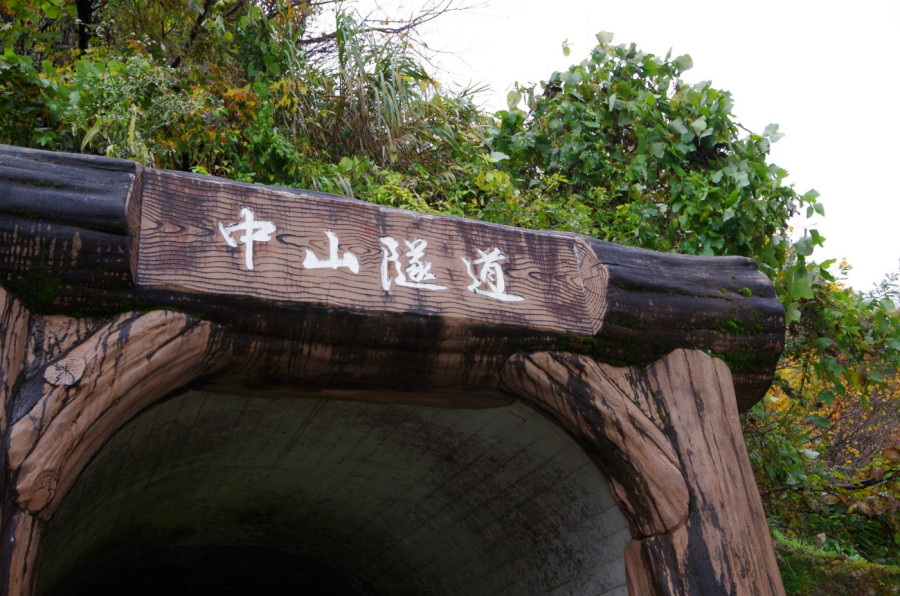Yamakoshi is one of the heaviest snowfall areas in Niigata Prefecture. The Yamakoshi area, now merged into Nagaoka City, has many tunnels. Among these, the Nakayama Tunnel in Komatsukura village is renowned as the best hand-dug tunnel in Japan.
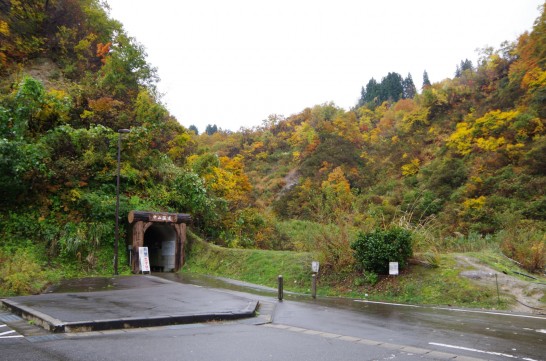
Komatsukura village is the deepest part of Yamakoshi in the east. It was a village where people had to "cross a mountain pass" to get anywhere. Moreover, the surrounding area is a heavy snowfall area with more than 4 m of snow every year. The Nakayama Tunnel was built to avoid having to go over dangerous mountain passes.
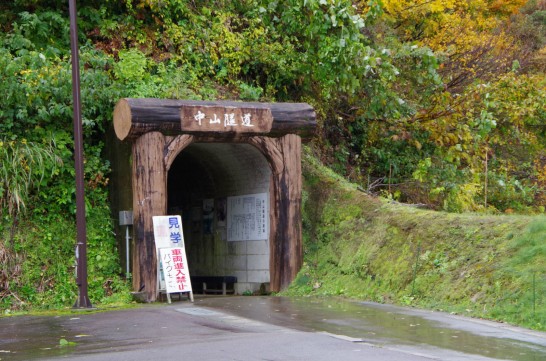
What makes the Nakayama Tunnel the longest in Japan is its length as a hand-dug tunnel! It is the longest in Japan at 877 metres. After a groundbreaking ceremony in 1933, when the local people stood up for themselves, and after a wartime suspension of excavation, the tunnel was penetrated 16 years later, in 1949! The sheer amount of energy involved is astonishing.
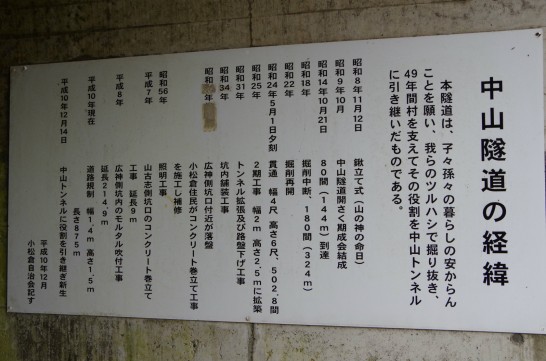
The opening of the Nakayama Tunnel in 1998 (Heisei 10) ended the tunnel's 50-year role, but it is still accessible on foot.
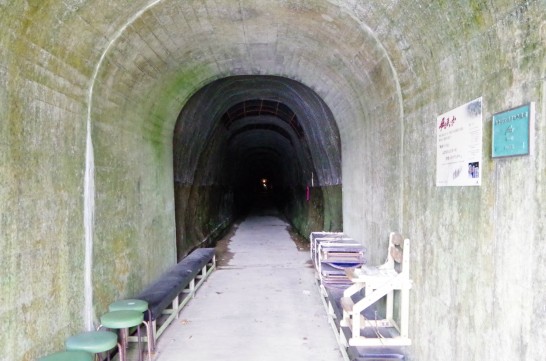
The entrance to the tunnel is lined with rotting benches. The air is cool.
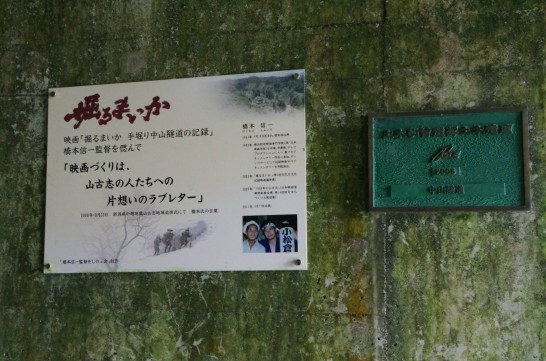
The Nakayama Tunnel was made into a documentary film in 2003 (Heisei 15), entitled "Digging the Tunnel: the record of the hand-dug Nakayama Tunnel". The reason for this is that the tunnels were dug by hand. The tunnel is said to still have pickaxe marks on the inside.
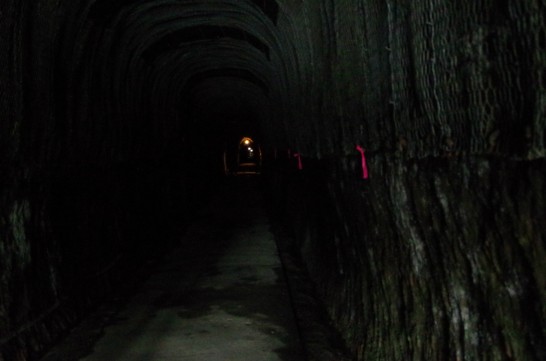
Looking in from near the entrance, there is a pothole, a pothole and a light. It is dark! We didn't bring a torch, so we went deeper with the flashlight app on our phone. But this tunnel. It said that the lighting work was done in 1984. ...... Until then, you went through this tunnel with only a handheld light? Scary!
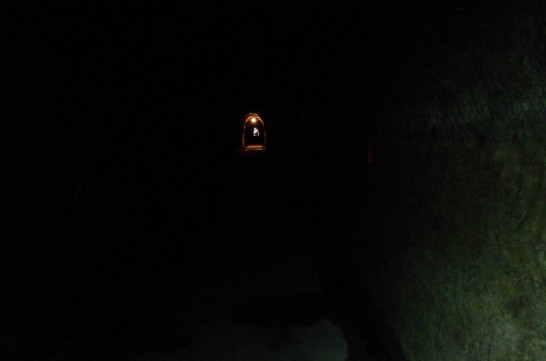
Dark until the next electric light.
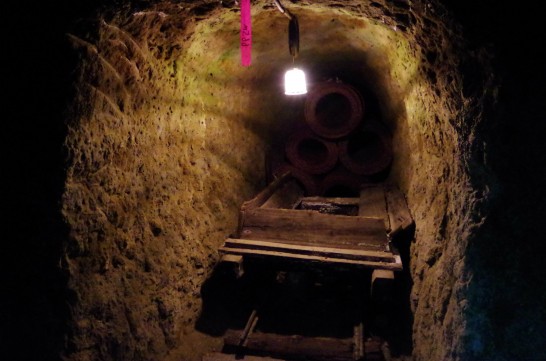
As soon as you enter the tunnel from the direction of Komatsugura village in Yamakoshi, you will see tools that would have once been used to carry earth and sand to the side. And on the wall around it, there are marks where pickaxes would have been used to dig.
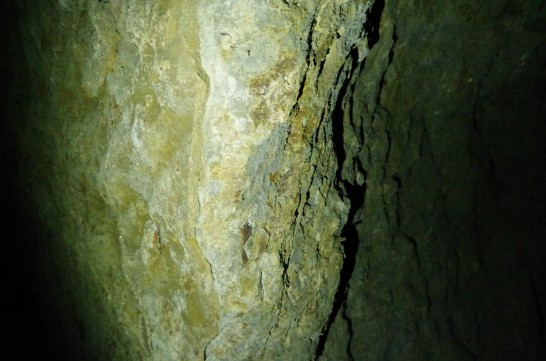
I mean, the walls don't seem to be in order at all, full of rough scars. I felt tremendous energy when I thought about how these were dug by hand .......
However, it was very cold that day and it was a bit hard to walk through the tunnel to the other side, so we decided to turn back halfway.
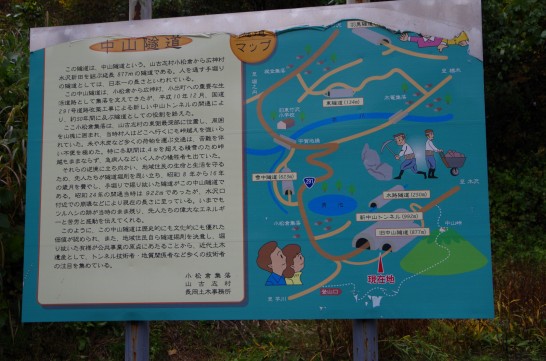
A map in the car park showed that it was possible to enter from Koide town on the other side, so we decided to drive through the New Nakayama Tunnel to that entrance.
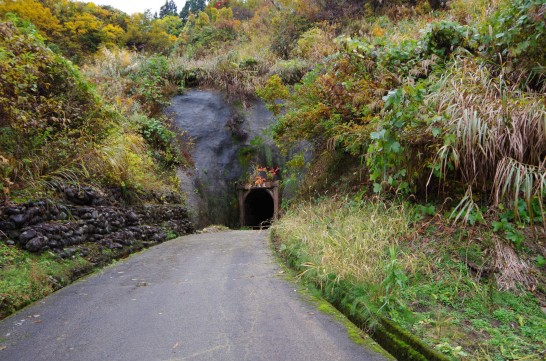
The entrance to Koidegawa was not right next to the Shin Nakayama Tunnel, but in a slightly confusing place, once above the Shin Nakayama Tunnel and then down the other side. Unlike the well-developed Komatsugura village in Yamakoshi, it had a quieter appearance.
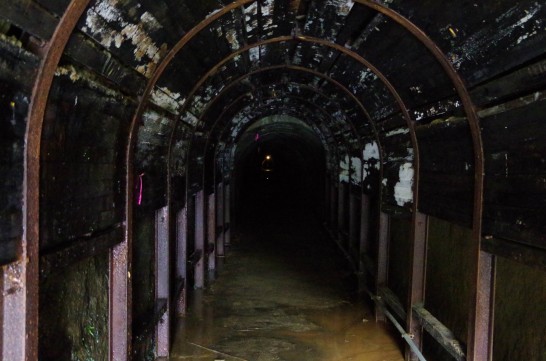
The inside of the tunnel is also as shown! Bare steel and rough.
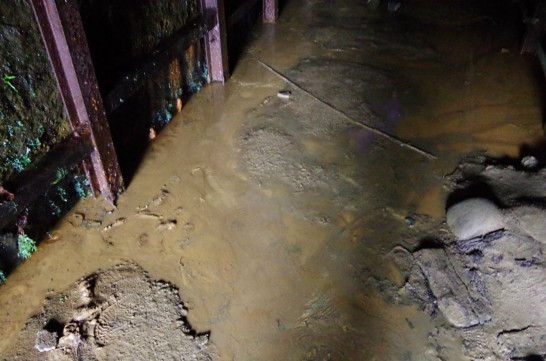
The feet are also waterlogged.
It was somewhat emotional ...... to know that this place was once used as a lifeline for life.

Incidentally, there is a light switch on the Koide-cho side! There is also a light switch on the Yamakoshi side, but it says: "Please turn off the light when you leave"! You can't see into the tunnel to the other side, and there's no way to check if there are still people in the tunnel. I thought it would be a disaster if I switched it off ...... and turned it off, but it really did turn off, so I panicked and switched it back on. This is definitely dangerous~...
Well, when I got back, I looked it up and it seems that the tunnel is amazing, as the further you go inside, the more the ceiling changes shape and narrows. Sheesh ....... Next time!
Tunnels dug at great risk to their lives. You might think, "Why would they do this?" but in Yamakoshi, where there is deep snow, crossing the mountain pass is more of a risk. It was a long-held dream to secure a safe transport network to the outside of the village. It is even more amazing that this was not done by public works, but by the residents. The history of overcoming hardships unique to a snow country is about 20% more powerful when seen from this perspective! Incidentally, I heard that the site was selected as a Civil Engineering Heritage Site by the Japan Society of Civil Engineers in 2006.
Everyone is encouraged to go through all the tunnels!
Zhongshan Tunnel
advertisement


